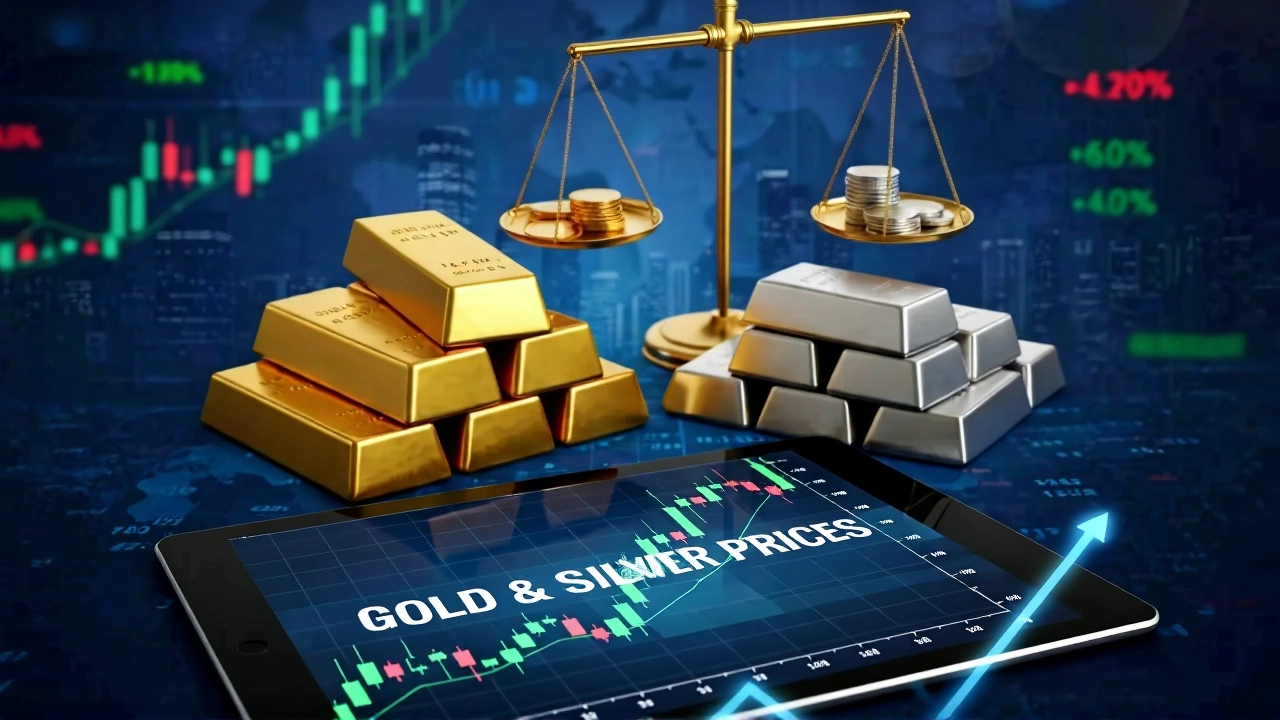Silver Prices – Why They Matter and What Moves Them
When talking about Silver Prices, the daily cost of the metal as traded on global exchanges. Also known as silver market rates, they serve as a barometer for both investors and manufacturers. Understanding silver prices helps anyone from a jewelry maker to a portfolio manager make smarter choices.
Silver lives inside the broader Commodity Market, the network of exchanges where raw materials are bought and sold. Its price swings often mirror movements in Gold Prices, the valuation of gold per ounce on international markets because both metals share store‑of‑value appeal. When gold climbs, silver usually follows, but the gap between them can widen if industrial demand for silver spikes.
Key Drivers Behind Today's Silver Prices
First, industrial demand is a powerful engine. Silver conducts electricity better than any other metal, so solar panel manufacturers, electronics factories, and medical device producers all watch silver prices closely. A surge in renewable‑energy projects can lift demand, nudging prices up faster than pure speculative buying.
Second, cultural events matter more than you think. In many South Asian festivals—think Diwali or Chhath Puja—silver jewelry is a gift tradition. When the festival calendar fills up, retailers stock more silver, and seasonal buying spikes push prices upward. That link between festivals and market sentiment shows why timing matters for both sellers and buyers.
Third, investors treat silver as a hedge against inflation. When central banks ease monetary policy or when currency values wobble, investors flock to precious metals. This influx of capital can raise silver prices even if industrial use stays flat. Watching how Investors, individuals or funds allocating money to assets for return or protection reposition their portfolios gives a clear picture of price direction.
Finally, macro‑economic data—like GDP growth rates, manufacturing PMI, and currency strength—feed into price forecasts. A strong dollar usually drags silver prices down because the metal becomes more expensive for holders of other currencies. Conversely, a weakening dollar or a rise in real‑interest rates can lift silver as a cheap alternative store of value.
All these factors intertwine. For example, a spike in solar installations (industrial demand) combined with a major festival season (cultural demand) and a looming inflation concern (investor demand) can create a perfect storm that pushes silver prices higher than usual.
Our collection below pulls together stories that touch each of these angles. You'll find analysis of market trends, deep dives into how festivals boost demand, and expert takes on why investors are eyeing silver as safe‑haven assets. Whether you track price charts, plan a purchase, or just want to understand the forces at play, the articles ahead give you a well‑rounded view.
Take a look at the posts below to see how these dynamics play out in real time and to discover actionable insights you can use right now.
Economy & Markets

Gold Hits ₹1.22 Lakh/10g as Silver Soars Ahead of Diwali 2025
Gold tops ₹1.22 lakh per 10 g and silver hits record highs ahead of Diwali 2025, driven by festive demand and global market forces.